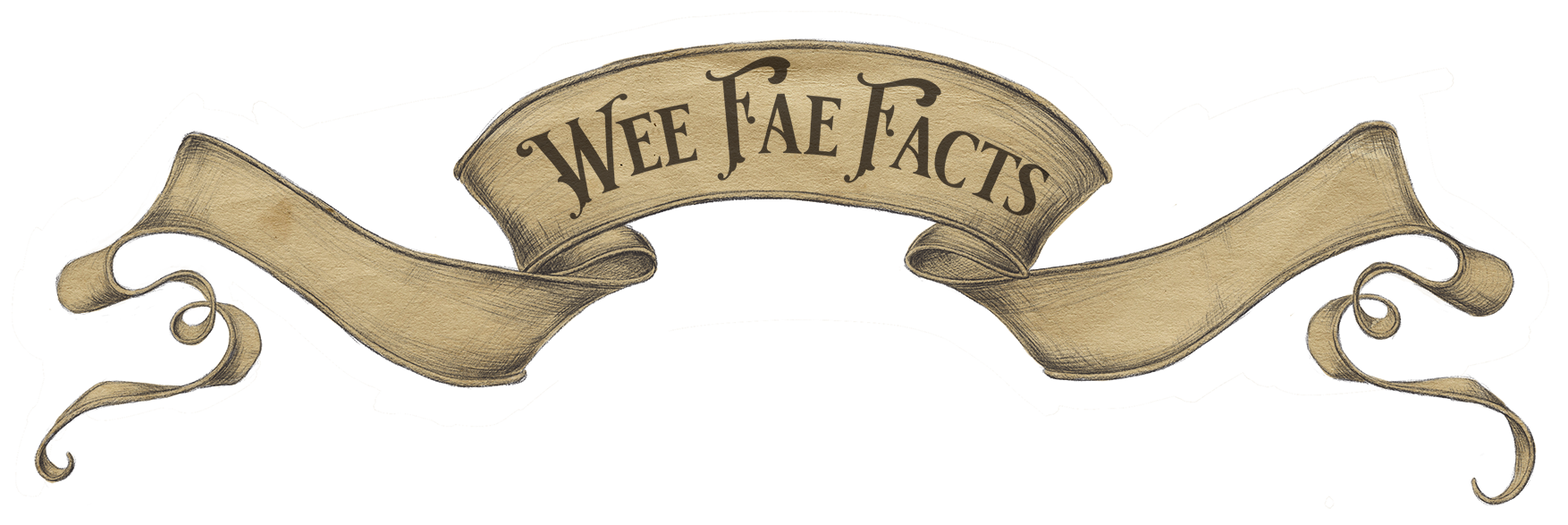What is a Changeling?
Here, we depart from kind, helping, caring or even harmless fairy trickery. Changelings are a truly dark and sinister type of fairy. These tales depart from lighthearted stories in far off places and take us into a far more terrifying and realistic type of story telling. Born from necessity and the bitter realities of how hard life can be, legends and belief in changelings persisted well into the 19th century.
Changelings are most widely known to be a fairy left in place of a human child. Much of what we know about them come from Irish and Scottish folk-lore, but such creatures were believed in all over Europe. Stories of similar creatures can also be found around the world. Changelings can be a fairy, troll, daemon, evil spirit or even an enchanted log or large piece of wood.
A Changeling's Appearance
The ultimate goal of a changeling is to successfully switch places with a human. Their fairy abilities allow them to create a likeness, but the sheer number of stories about them suggests their abilities fall far short. The most telling is how thin they tend to be. Apparently it is difficult for a fairy to appear chubby and it is a tell-tale sign a switch has been made. They may eat and eat, but never gain any weight. Their temperament also sours and their faces are mostly squeezed into displeasure and emit cries of distress ceaselessly.
The size of the eyes and mouth may also change in appearance, becoming too large for the face. It might also be noticed the eyes looking back have a deeper sense of the world, a cunning and understanding that wasn’t there before. The hands may also tell as the fingers become too long and agile. Some stories report changelings unable to grow or walk, while others grew up and remained in a human family well into adulthood.
The Changeling
European Roots
A Solitary Fairy
Alternative Names:
Auf or Oaf
Well-Known For:
Shifting into the form of a human who is stolen by the Fae and taking their place.

The Fairy Motivation
In many cases it is not the changeling who chooses this fate, but rather their kin. In some ways, it's possible a changeling can be as much a victim as the babe and their family. Placed in a crib and expected to replace a human child. But why? We can only ever speculate at the mind of a fairy, but you can be sure many have cooked up innumerable reasons as to why one of our own would be spirited away.
Quality of Life:
In the case of a troll, it was thought they preferred their children to be raised by humans. Such trolls wished a better life for their own child. Knowing a human child has many more opportunities and comforts in the world than they could offer, it was believed they would swap babies out of love.
Tribute:
A darker explanation lay in a bet made with the Devil himself. The Fae lost this bet and in return must pay the Devil a tribute or a sacrifice. Obviously, they don’t want to give up one of their own and so instead will take the most pleasing humans they can find and offer them up to the Devil in their stead.
Old and Crotchety:
Those of the Fae who grow old and worn may tire of their life and desire an easier time of things. What fun and ease can be had as a human babe. Cuddles, games, plenty of warm milk and a comfortable bed; what more could a fairy desire? So, they choose a lovely child to join their kin, attempt to adopt the look of the babe and slip underneath the covers. Every desire is met with a whine and a cry and the changeling may enjoy this until they pass from the world, leaving the baby’s parents to believe their own child has died when in fact it was the old fairy who’d stolen its place.
What fun and ease can be had as a human babe. Cuddles, games, plenty of warm milk and a comfortable bed; what more could a fairy desire?
Beautiful Things:
Perhaps most common of all reasons is the fairy’s attraction to beautiful things. Whether it be a lovely young lad or lady or, more commonly, a sweet little baby, the more attractive they are the more likely to be stolen away. Some thought this was to improve the attributes of their descendants. Others believed this to be a way of ridding themselves of ugly fairy children and replacing them with a beautiful human baby.
Fairy Love:
The Fae are often known to experience emotions in extremes. Anger, jealousy, grief, joy and love in such quantities there is room for little to nothing else. Therefore, if a fairy has fallen in love with a wee infant, there’s very little in this world to stop them from taking the babe home with them to live out the rest of its days in their company. Soft, squidgy, well-behaved and adorable babies can be particularly tempting, but a beautiful lass or lad can also be alluring for the Fae; especially if they are talented in the musical arts.
Slavery:
It was also widely known that fairies tend to be quite lazy and are always in need of help handling menial labor. Of course there are some of the wee folk who enjoy the nature of repetitive chores like the Brownie or Nisse, but on the whole a Fae would much rather outsource a daily grind. It’s likely many a stolen human found themselves beholden to the whims of their captors.
Fairy Proofing
The belief in and fear of changelings was deep and far-reaching. Throughout Europe, people told stories and took action upon the belief in fairy doubles. To think your child could be taken from you in such a way with barely a moment’s notice lead to desperate attempts at warding away the fairies.
What many would come to believe in as the best form of fairy proofing their children was baptism. For a tidy little fee, a family could have their child baptised and named, both giving the infant protection from most would-be fairy-nappers. Baptism was a very real priority in much of Catholic Europe and would be attempted within three days of a baby’s birth. These early days of a baby’s life were very fragile and parents would do what they could to improve their child’s chance of survival. While waiting for the baptism, and sometimes even after, parents would rely on many superstitions.
A pair of open iron scissors in the cradle was believed to keep newborns safe from the wee folk.
Action could be taken the moment a child was born. Placing them in their parents clothing as soon as possible, or clothing that had been passed through the smoke of a fire were quick methods to begin with. Placing items made of iron in the cradle, a pin in the baby’s clothing, an open pair of iron scissors over the cradle, a bible, holy water, a literal ring of fire around the baby, a pair of pants laid over the cradle, and a watchful parental eye are only some of the best known ways to ward against abduction. It was also believed that if anyone were to speak too kindly of a baby’s looks or temperament it could garner the attention of the “good people” and that was something to be avoided at all costs.

Getting Them Back
I must warn you, what follows in this section is not for the tender hearted and may cause distress. Continue reading only if you are prepared for heavy-hearted information. Fairy belief can be light hearted and full of wonder, but it is also weighed down with the harsh realities of life and things difficult to comprehend. In regard to the Changeling beliefs, many children have come to harm. If you'd like to skip ahead, it's safe to read beyond the eggshells.
Once taken, there was little hope for a return. The fairies often do as they please. Convincing them to return someone stolen was a daunting feat. Nevertheless, there is no shortage of tales and advice on how to have a changeling returned. Unfortunately, most attempts include wicked acts of violence against the suspected changeling such as brutal beatings, burning, boiling and exposure to the elements.
In the case of exposure, a baby would be left outside overnight in hopes of forcing the fairies to take pity on their own and save them from the cold, thereby returning the human child. If the baby were found alive the next day there was hope the human child had been returned, if not… well then at least they would not be forced to raise a changeling child.
Bridget Cleary and her husband
Another popular approach in many tales includes burning the changeling. Fire is often a strong deterrent against the fae. It was expected that the hot flames would drive the fairy out of the house, and, quite often, spurred right up the chimney in its desperate escape. These methods did not guarantee the return of the child, but it was an effective means to rid the family of the unwanted fairy. Sadly, many children would suffer at the hands of perhaps well-intentioned but fatal attempts to "bring them back". There is also a well documented case of a woman who was burned alive in the attempt to drive her changeling up the chimney.
In 1895, the murder of Bridget Cleary showed the depths a belief in changelings can reach and the lengths people could be willing to go because of them. In this case, the husband believed his wife to be a changeling and convinced other family members and friends. She would ultimately be tortured and burned to death by her husband as others stood by. There is a lot of information about this case and if you find yourself in disbelief and more curious, you will not be disappointed in the disturbing depths and strangeness of this unfortunate woman's story.
Non Violent Methods to Retrieve the Taken
The most common non-violent method would most certainly be to trick a changeling into revealing its age by surprising it. Fairies live far longer than we, some of them are even immortal. Having lived so long, they tend to have “seen it all” and can become quite bored with the passage of time. Perhaps this is why a truly strange and unexpected behaviour can cause a changeling to forget itself and reveal its identity when truly surprised.
A now well known tale illustrates this point quite well. In the story, a mother is trying to win back her stolen babe and has an idea to boil some water in eggshells. Brewing, or baking as happens in other tales, eggshells was considered so strange and unexpected that a changeling couldn’t resist the novelty of it and would almost certainly be tricked into revealing itself with surprise and wonderment.
Brewing or baking in eggshells was once an effective means to expose a changeling
They could also be exposed through their own blunders due to sheer boredom leading to mischievous actions to entertain themselves. They may give into the call of the pipes and play a merry tune. They may suddenly begin walking, unable to remain lying in one place day after day. This is especially suspicious is the babe they are impersonating is far from achieving such a goal.
Either method, violent or not, the goal is always to trick or force the fairy to reveal their true selves. Once a changeling is forced against its will to show themselves, they seem to be unable to remain. The trouble lies less in driving out the changeling, but perhaps mostly in having the human returned. The stories in which the child was returned usually include confronting the Fae directly through working out a deal, or in receiving help from a faerie who did not want the changing to be left with the humans. The hope that causes these methods to persist is that once the changeling is exposed, the wee folk will be forced to return what was taken. Sometimes this is true, although it is sadly not always the case.
A Long-Held Belief
Changelings are a dark, but fascinating part of fairy lore and history. The belief in them goes back perhaps before the 1200s and, it could be argued, still persists today. Trying to understand our world and some of the more painful parts of it has no doubt fuelled these tales and caused them to resonate for centuries.









